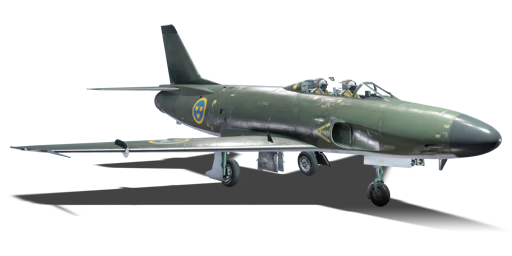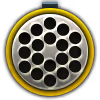



The J32B was an all-weather fighter/interceptor which entered service with the Swedish Air Force in 1958. 118 aircraft were built, with 26 involved in accidents. Compared to the previous A32A, the J32B comes with a more powerful RM6A engine and four 30 mm Akan m/55, as well as the ability to carry air-to-air missiles. The J32B retired in the 1970s and was replaced by the J35.
The J32B was introduced in Update 1.95 "Northern Wind". The J32B combines excellent climb rate and devastating firepower, both in terms of suspended and offensive armaments. The J32B can easily get to an altitude where it can look down on opponents and go into a dive to deliver a lethal bite from its devastating firepower, then using the energy it got from the dive to make a quick escape and gain altitude again. Using the afterburner will get it out from dangerous situation if needed, though will come at a cost of the fuel consumption will rise and drain the fuel tank fast.
flaps
flaps
flaps
brake
| Belt | Belt filling | Armor penetration (mm) at a distance: | |||||
|---|---|---|---|---|---|---|---|
| 10 m | 100 m | 500 m | 1000 m | 1500 m | 2000 m | ||
| AP-T/AP/HEI/AP/HEI | 37 | 34 | 22 | 13 | 8 | 5 | |
| AP-T/AP/AP/AP/AP | 37 | 34 | 22 | 13 | 8 | 5 | |
| AP-T/HEI/HEI/HEI/HEI | 37 | 34 | 22 | 13 | 8 | 5 | |
| AP/HEI | 37 | 34 | 22 | 13 | 8 | 5 | |
| Name | Weight | Slot | ||||
|---|---|---|---|---|---|---|
| 72.6 kg |  |  |  |  | ||
| 19 × | 183 kg |  |  | |||












Flight performance | |
|---|---|
Survivability |
|---|
Weaponry | |
|---|---|